Doug Fogelson’s inquisitive practice in photography echoes the experimentation that was central to the medium’s inception. For the better part of 20 years, Fogelson has consistently produced seductive imagery while investigating unsettling issues (e.g., climate change). This week The COMP Magazine caught up with Fogelson to discuss his current investigations on the impact of humanity on our environment, his Openlands Artist Residency, recent exhibit in New York at the Sasha Wolf Gallery, and his affinity with 19th c. photographers.
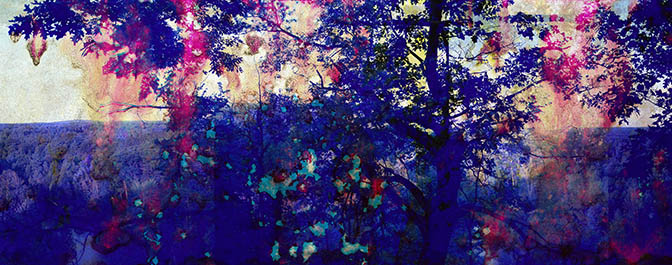
Doug Fogelson, Return to Oblivion, No. 10, 22×84 inches
You’ve been making and supporting serious art and photography in Chicago for some time. You are from Chicagoland, studied at the School of the Art Institute, directed Front Forty Press, and shifted your focus to personal investigations. What early experience do you see as being a constant in your ongoing aesthetic inquiry?
Something that came out of my early experiences, which informs my work, is the concept of transience. We moved a lot when I was young, shifting around Chicago, suburbs, and vicinity, and then I went further afield beginning in junior year of high school. Living in urban, suburban, and rural settings has impacted my relationship with nature from a very young age.
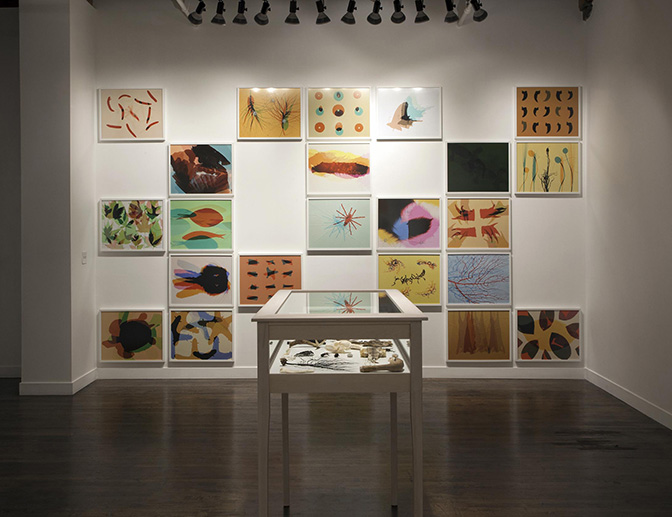
Doug Fogelson, Broken Cabinet, Installation at Linda Warren Projects, 2015
Lets begin with your 2015 installation Broken Cabinet presented at Linda Warren Projects and the Elmhurst Art Museum Biennial: Chicago Statements. You contrasted found artifacts with a series of complimentary photographs that appear to be photograms. Can you walk us through this effort?
Broken Cabinet is a riff on the historical “Cabinet of Curiosity” where artifacts from the world are collected in a room (aka ‘cabinet’) and used for contemplation. These were very often taxidermy or preserved specimens of flora and fauna but can also include other wonders. My cabinet is broken as a reference to the current large-scale extinction event we are living through. Often called the “Sixth Mass Extinction” the planet is in the midst of losing thousands of species from every corner of the globe due to human industry.
I collected/purchased the physical specimens and used them to make color photograms where the object is somewhat reanimated over multiple exposures. Moving the subject between each exposure of varying colored light results in blended hues where light reaches the film more than once. In this process the object leaves a direct imprint or shadow of its form without needing a camera (or scanner) and I am just facilitating the lights and motion. There is an element of chance- that I value as an important aspect in the collaboration between object, the light sensitive materials, colored light, and myself.
The installation of Broken Cabinet presents those same objects that have been used to make the photograms as a collection in a case along with framed prints of the photograms in grids or groupings. The style mimics something similar to a museum of natural history however many of the frames have cracked glass on the front as if they were damaged in transport or hit with something. The glass element is used to jostle the viewer from the wonder of encountering the actual object/talisman in the display case or its candy colored representation on the wall, reminding them that all is not well in the non-human world.
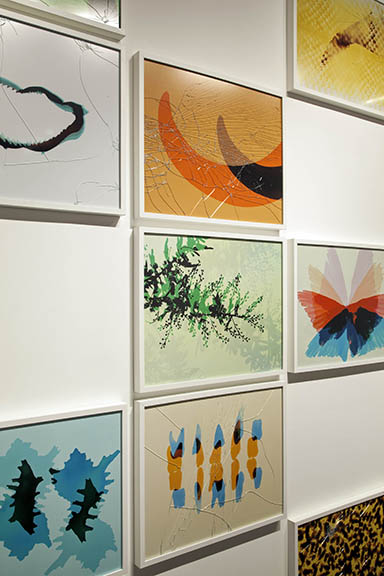
Doug Fogelson, Broken Cabinet, detail view of Installation at
Linda Warren Projects, 2015
Recently, you presented Creative Destruction at the Sasha Wolf Gallery in New York. Can you share with us an introduction into this series of work?
Continuing with the theme of natural systems as impacted by humanity Creative Destruction visually echo’s the affects of climate change. I perform landscape photography in the field and then use common industrial chemicals such as bleach to change the surface of the film. This post-production has the effect of draining the colors in the emulsion and melting it away layer by layer. In the destruction new things are created, which we can see better once the film is scanned and enlarged. The degradation becomes painterly and produces crystals, bubbles or other patterns. Full color images shift color back to cyan, magenta, and yellow when chemically altered. There is a tension between representation and abstraction in the final images.
I expose the landscapes on travels and around the upper Midwest. Often when I am shooting I will expose multiple frames over each other along the film roll with changing scenes. The result is a collapse of time and space on the picture plane as well as bands of exposures where the camera window has advanced partially over a previous frame.
Time cycles, change, the ephemeral, toxicity, runoff, pollution, these are some of the themes from the Creative Destruction show and the Chemical Alteration series in general. We now live in a time where human industry has reached every aspect of the planet. In this Anthropocene epoch the land, air, and sea are all undergoing rapid changes set in motion decades ago. This work is my way of coming to terms with that shift and bringing it into a conversation about our own mortality and legacy.
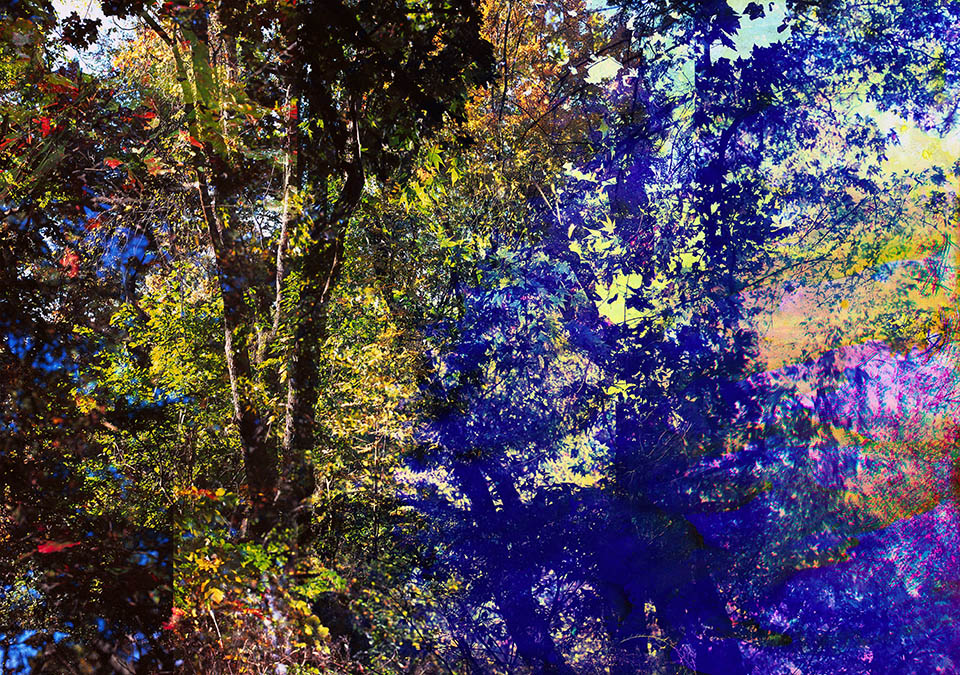
Doug Fogelson, Creative Destruction, No. 6, 30×34.5 inches
Process appears to be a constant in your art practice. You value fieldwork and frequently experiment in the darkroom and digitally. On one level I see your investigations similar to those that surfaced during the inception of photography in the early 19th c. Do you see any affinity with early practitioners?
Sure, I am still excited by the same sort of things the early practitioners of the medium were discovering and also those from the DADA times, New Bauhaus/Institute of Design, and contemporary experimentalists are. The material of photography is magical to me in ways that never seem to get old. This real science and the sort of pseudo-scientific process I employ in my projects combine to open a dialog between related fields such as biology, taxonomy, social/environmental studies and art. In the studio I use a darkroom, scanner, and digital camera to interact with objects and bring them into a digital space to create print editions. So there is hybridization between very old processes like the primary photogram and very new ones such as digital scanning, production, and printing technology.
I just enjoy interacting with the process at various points both physically and mentally. The objects in the photographs are of interest as is the object of the photograph itself.
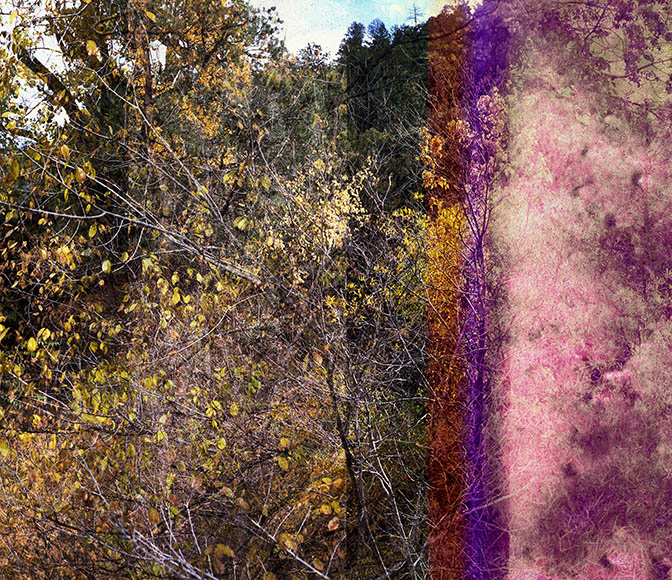
Doug Fogelson, Creative Destruction, No. 2, 30×34.5 inches
You are currently working upon an Openlands Artist’s Residency. This investigation appears to continue building upon your interest in our regions natural habitat and its various native species. Can you offer an overview of this project and any future plans for the summer season?
As the Artist-in-Residence for Openlands (www.openlands.org)I have been working on a yearlong project in specific prairies, preserves, and forests. It is another pseudo-scientific investigation about how the human-nature balance is really totally interconnected despite the compartmental way we have been trained to separate them in society. Collaborators and I visit Openlands locations and make photographs and collect samples, which are then documented in the studio via studio photography/scanning and the like. Sometimes elaborate scenarios are created to mimic institutional or academic processes such as those used by archeologists. These combined efforts will be used create a series and installation.
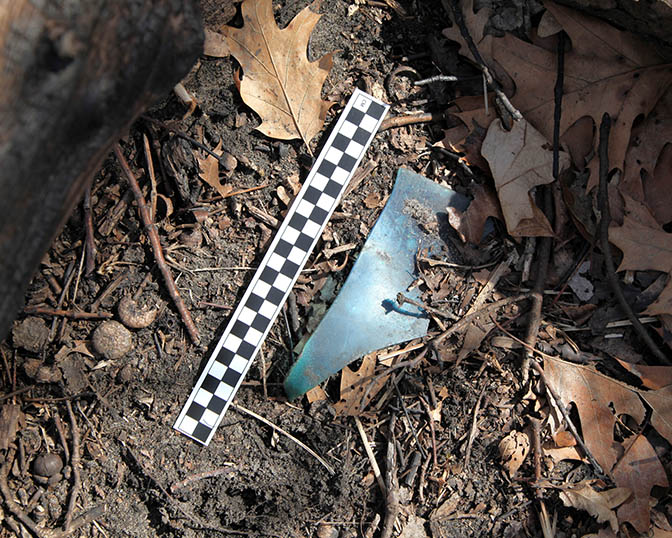
Doug Fogelson, Openlands Artist Residency, Eggers Grove 8402
What do you value in your art making practice?
Freedom.
In addition to your residency project, what other items are on the docket for 2016?
The next exhibition is opening on June 12th at the Brushwood Center at Ryerson Woods forest preserve in Lake County, near Deerfield, IL. Typically Brushwood hosts 4-6 exhibitions each year and they have featured Chicago artists such as Jenny Kendler, the Belknaps, John Preuss, Chris Garafalo, and Heidi Norton. The exhibition space is housed inside a historic home that’s been converted into gallery space. I will install a new edit of Broken Cabinet, some select images from the Creative Destruction/Chemical Alteration series, and an outdoor site-specific piece. The exhibition will run three months.
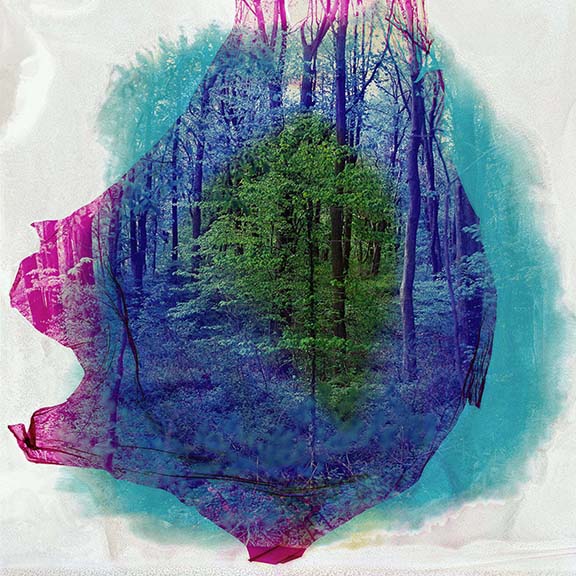
Doug Fogelson, Ceaseless, No.1, 24×24 inches
For additional information on the work of Doug Fogelson, please visit:
Doug Fogelson – www.dougfogelson.com
Openlands – www.openlands.org
Sasha Wolf – http://sashawolf.com/artists/doug-fogelson/
Brushwood Center – http://www.brushwoodcenter.org/
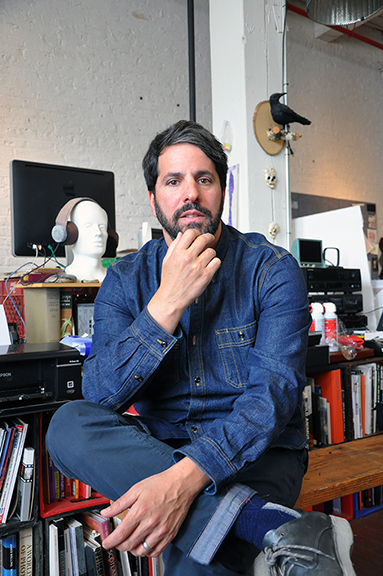
Doug Fogelson, photographer, Chicago, IL, 2016
Artist interview and portrait by Chester Alamo-Costello


